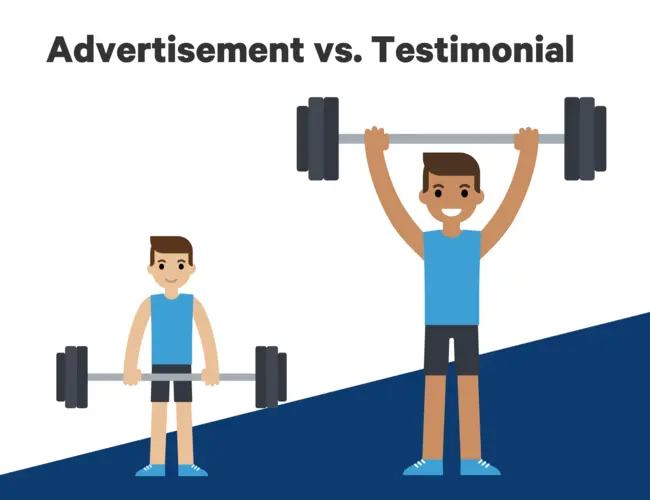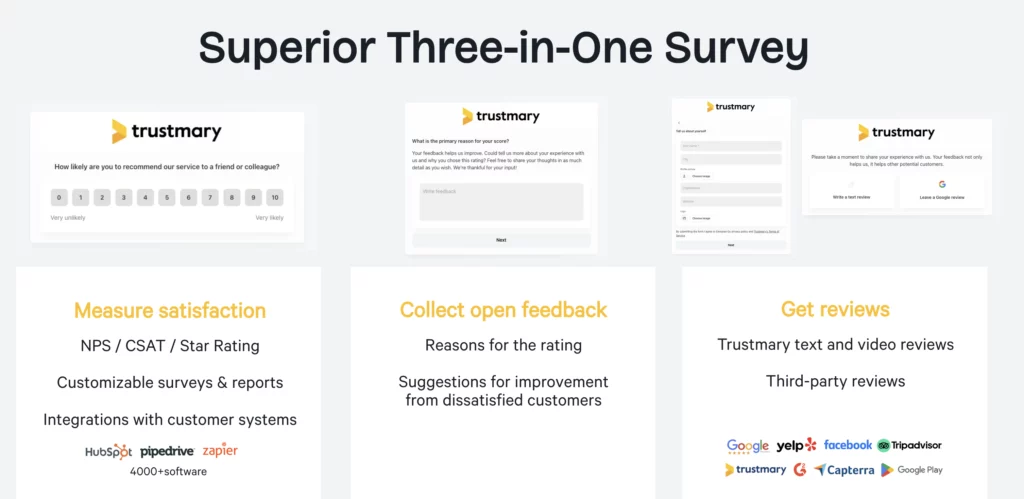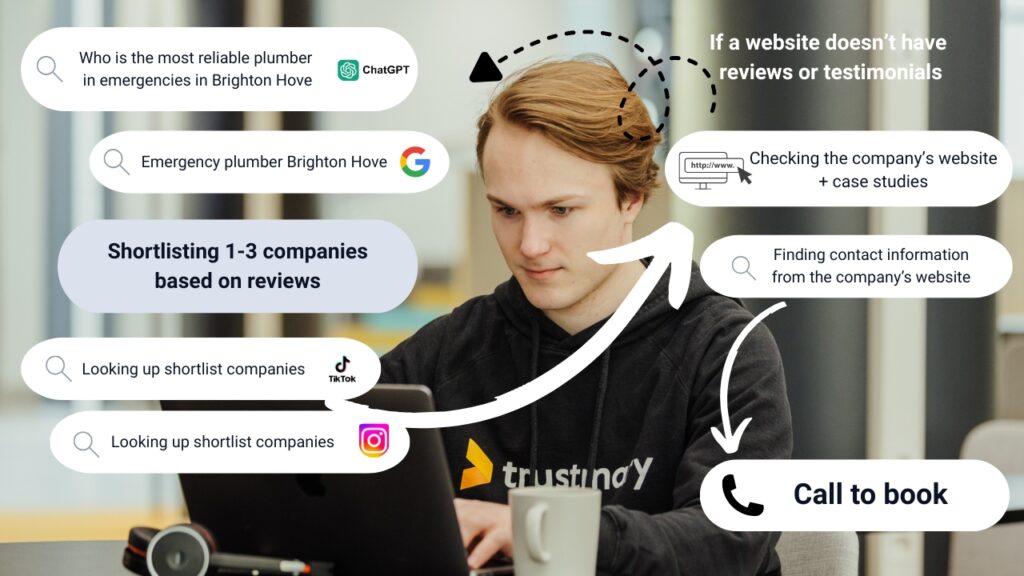How Testimonials and Reviews Drive Success in The Travel Industry

No one books a dream vacation based on a company’s claims alone.
Travelers want proof. They need to know that their luxury resort won’t look like a bad Airbnb surprise, that their guided tour won’t be a snoozefest, and that their itinerary won’t fall apart the second they land.
That’s where testimonials and reviews come in.
Whether it’s a glowing five-star rating on TripAdvisor or a heartfelt social media post about your top-tier service, authentic feedback builds credibility, drives conversions, and keeps your business thriving in a competitive industry.
In this blog, we’ll explore how to collect, showcase, and maximize the impact of testimonials and reviews, turning every happy traveler’s experience into your most powerful marketing tool.
Importance of Social Proof in Service-Based Industries
Social proof is the sway that other people's opinions and actions hold over our own decisions.
If you see a crowd of people lining up for a particular restaurant, you assume that restaurant is worth trying.
The same concept applies to travel and tourism services.
Large Financial Commitments
Travel can be pricey—think flights, accommodations, activities, and more.
Whether someone's booking a luxury cruise or an extended backpacking trip, the cost can climb fast.
Naturally, travelers want to feel assured that their dollars (or pesos or euros) are well-spent.
Reading first-hand accounts from happy globetrotters eases anxiety and builds the trust needed to click "Book Now."
Complexity of Services
Travel can quickly become a logistical puzzle: multi-stop itineraries, visas, transportation, and last-minute plan changes.
Even the simplest trip can get complicated if something goes sideways.
Reviews that detail how you handled unexpected flight changes or a sudden hotel upgrade showcase your ability to solve real-world travel hiccups.
It's more compelling than any web copy you could craft on your own.
Trust Is Everything
Vacations should be memorable in all the right ways, which is why trust forms the heart of any travel service.
Testimonials and reviews offer an unfiltered look into what real travelers experienced, highlighting details you might not think to mention.
When readers see a pattern of satisfied customers, fear of the unknown fades, and your booking calendar fills.
How Testimonials and Reviews Foster Credibility
You might proclaim that your travel agency has the best connections or that your tours are flawlessly organized.
But when a past client chimes in with, "My trip was seamless from start to finish," it packs a stronger punch.
Here's why:
Third-Party Validation
Studies show that 92% of consumer trust recommendations from real people over corporate ads.
For travelers, seeing a glowing review from someone who's actually navigated the same flights, hotels, or tours is worth more than any banner ad. This neutral stamp of approval fosters instant credibility.

Humanizing Your Brand
Reviews often come with personal stories: that hidden-gem restaurant you recommended or the way you handled a hotel booking mix-up at 2 a.m.
These anecdotes humanize your brand. They turn an abstract business into a friendly, caring travel partner that solves problems and spreads joy.
Consider feedback from a travel experience arranged by Travel Agent Inc:

Such personal stories build an emotional connection, demonstrating that your brand isn’t just efficient—it’s also caring and dedicated.
Differentiation in Crowded Markets
Plenty of travel companies claim to be "the best in the city" or "the leading tour operator in the region."
But do they have the proof? A gallery of rave reviews is the ultimate authority booster, showing you don't just talk a good game—you deliver.
Better Quality Leads
Travelers who've read genuine testimonials and reviews before contacting you aren't just curious; they're nearly convinced.
Their trust factor is already high, so your sales conversations focus more on trip details and less on persuading them to believe you're legitimate.
Best Practices for Gathering and Showcasing Testimonials
Capturing the magic of your guests' experiences requires good timing, a user-friendly process, and a knack for showing those stories off.
Know When and How to Ask
Ask for feedback at peak excitement. If you wait too long after their trip, details fade and enthusiasm wanes.
If you pounce too soon (before they've even landed back home), they might not have fully absorbed the experience.
And when you do ask, be direct:
- "How satisfied are you with your trip overall?"
- "Would you be willing to share a short testimonial about your experience?"
Trustmary's superior three in one feedback survey gets you customer feedback, testimonials, and third-party reviews in one go

And make sure to remove every obstacle that might stop them from sharing feedback. If leaving a review takes too many steps, customers won't bother.
Provide:
- Direct links in email follow-ups. Email is still one of the most direct communication channels for service-based industries. After a trip completion, send a succinct follow-up email with a clear call to action. Keep it brief, and ensure the link to your review page is obvious and clickable.
- QR codes that customers can scan on-site. For instance, if you run a travel kiosk, place a QR code using one of the many affordable or free QR code generators available online at your reception or near the exit. Invite customers to leave a testimonial right from their phone. QR codes are user-friendly, reduce friction, and can help you capitalize on the moment when your customer's satisfaction is at its peak.
You can also simplify the testimonial collection process by utilizing digital feedback platforms like Trustmary that let you automate feedback requests with easy-to-use templates.
They also help consolidate reviews from multiple platforms in one place. Streamlined systems ensure you never miss an opportunity to gather new testimonials.
Use Multiple Formats of Testimonials And Reviews
Testimonials aren't limited to star ratings or short comments. Experiment with various types:
- Text-Based Quotes. Perfect for quick scanning. Choose short, punchy excerpts that highlight specific benefits.
- Case Studies. Great for group tours or corporate travel. List out the challenges, solutions, and ultimate benefits.
- Video Testimonials. Nothing beats seeing a traveler's face light up when describing the trip of a lifetime. Sit down with your clients in person or via video call, ask them about their experience, and compile the footage into a compelling clip.
- Photo Testimonials. Pictures of a traveler basking at a scenic spot or enjoying a unique cultural experience, accompanied by a short quote, can be posted to capture viewers' attention.
Pro Tip: Combine multiple formats on your website for maximum impact. For instance, include a short quote on your landing page and link to a detailed case study with visuals and video clips.
Make the Most of Third-Party Platforms
Third-party review sites often rank high in search results, so positive reviews there can funnel steady leads your way.
Plus, they serve as an unbiased, trusted point of reference for those who've never heard of your brand before. Here's how to get started:
Leverage Google My Business
Google My Business (GMB) isn't just another directory, it's prime real estate in local search results. When potential clients look for services in their area, a well-optimized GMB profile can vault you to the top of the rankings.
- Encourage happy clients to drop reviews here. More five-star ratings? Better local search visibility.
- Keep your profile fresh with updated photos, posts, and prompt replies to reviews.
A neglected GMB profile is a wasted opportunity. Keep it polished, engaging, and full of customer praise.
Travel businesses are facing a new issue with the rise of AI search engines like ChatGPT, as fewer and fewer traffic lands directly to their websites.
Instead, people start their purchase journey in AI searches and combine that with traditional search engines.
Having up-to-date contact information and recent reviews on Google might be a way to optimize for AI searches.

Explore Industry-Specific Directories and Communities
In tourism, platforms like TripAdvisor, Booking.com, and Yelp can significantly influence bookings.
- Claim your profile. Don't let an outdated listing (or worse—one you don't control) represent your brand.
- Encourage past clients to leave honest, detailed reviews. Quality over quantity wins here.
- Respond professionally. Even on niche platforms, engagement matters.
Many of these directories rank high on Google, meaning a stellar review might land you leads before your own website does.
Utilize Social Media Mentions
Don't overlook Facebook, Instagram, or TikTok for reviews or endorsements. Pin a glowing recommendation to the top of your Facebook Page or regularly share screenshots of positive feedback across social channels.
- Show behind-the-scenes content. Share short travel vlogs that feature a happy traveler's commentary on your excellent tour planning.
- Make stories and reels. Quick, snackable testimonials in stories or reels can capture attention fast. Overlay quotes on photos or short clips of a fantastic travel destination.
- Leverage user-generated content (UGC). Sometimes, your clients might post their own photos or reviews on social media. With their permission, repost them.
Display Testimonials on Your Website
You worked hard to collect feedback and reviews; now put those testimonials front and center.
When visitors land on your site, they should see social proof almost immediately.
Here are some quick tips:
- Create a Dedicated Testimonials Page. Gather your strongest reviews and organize them in one easy-to-browse spot. Include star ratings, brief quotes, and, if possible, images or names of satisfied clients..
- Weave Them into Service Pages.. For each specific service—like luxury cruises, custom itineraries, or tour packages—showcase a related testimonial. It offers real-world proof right when your prospect is thinking about that exact service.
- Use an Eye-Catching Widget or Design. A simple testimonial slider or card layout can make feedback feel more dynamic. Tools or plugins that automatically pull in new reviews keep the page current without manual updates.
- Incorporate Video. Even a short 30-second clip of a happy customer praising your work or travel arrangements can be more convincing than text alone. Embed these videos on high-traffic pages (like your homepage or pricing page) for maximum impact.
Handling Negative Reviews and Criticism
No travel agency wants a scathing one-star review, but negative feedback can actually spark improvements.
Make sure you're regularly going over your customer insights reports, Google review reports, and other relevant feedback channels.
Here's how to turn a potential setback into a stepping stone:
Respond Courteously and Promptly
A cool-headed, sincere reply shows you value your clients' input and take issues seriously.
Thank them for the feedback, clarify any misunderstandings, and apologize if needed.
Even if the review feels unfair, a composed response resonates far better with future customers than an online shouting match.
Provide Evidence When Appropriate
Sometimes, criticism may hinge on perceived lapses in scheduling or availability.
Detailed timesheets—tracking the hours your travel consultants spent planning itineraries or the time a tour guide was on-call—can help verify your side of the story.
If you have the budget for robust scheduling or resource-management software, great. Otherwise, there are plenty of credible sources from which you can download timesheet templates that let you log work hours and tasks in a transparent, verifiable way.
Offer to Talk Privately
If the issue is multi-layered, invite the reviewer to discuss it via email or phone.
A direct conversation often leads to a better resolution than a public back-and-forth in the comments section.
Many dissatisfied travelers just want to feel heard, and giving them a private channel to voice their concerns can de-escalate frustration.
Use Feedback to Improve
Recurring complaints? That’s your signal to take action. Maybe travelers felt out of the loop on itinerary changes or faced confusion with airport transfers.
This is especially crucial for travel businesses that depend on field assistance, such as tour operators, airport transfer providers, and on-the-ground travel coordinators.
If possible, invest in field service dispatch software to streamline your operations and help both you and the reviewer track, troubleshoot, and resolve service hiccups.
That way, when a traveler reports a missed pickup or scheduling mix-up, you can pull up real-time service logs, timestamps, and GPS data to pinpoint the issue. Was the driver caught in traffic? Did a last-minute booking error slip through the cracks?
By identifying the root cause, you can not only provide a clear response to the reviewer but also adjust your processes to prevent similar issues in the future.
Follow Up When Possible
If you’ve made improvements based on a complaint, don’t be afraid to circle back. A simple message like:
"We truly appreciate your feedback and wanted to let you know we’ve taken steps to improve our service. Our new real-time dispatch alerts should ensure no traveler experiences a similar delay again. We'd love for you to give us another shot!"
This approach shows that you're not just listening, you’re taking action. And sometimes, a proactive follow-up can even lead to a reviewer updating their rating or giving you another chance.
Turn Testimonials and Reviews into a Growth Engine
Think of testimonials and reviews as a steady stream of traveler-to-traveler endorsements.
Each comment is a stepping stone: it boosts your credibility, informs your service tweaks, and fosters lasting loyalty.
Your future success hinges on how well you champion this social proof.
So gather it, flaunt it, learn from it, and watch your travel business soar.
FAQ
How do I handle customers who post inaccurate or unfair reviews?
Respond politely with the facts. Invite them to talk privately about their concerns. If the review violates platform rules, you can request its removal.
Are video testimonials more effective than written reviews?
Often, yes. Video captures authenticity and emotion—travelers can see and hear someone's excitement. However, written reviews still work wonders, especially when displayed prominently.
Can I use testimonials from old clients to promote new packages?
Absolutely—just ensure they're still relevant and you have permission. If your offerings have changed, you could even ask clients for a quick update to match your newest services.
How often should I ask for feedback or reviews?
Request feedback at the end of every trip or experience. Also, consider periodic check-ins with repeat travelers if they've booked multiple times.
What's the best platform for showcasing testimonials in travel?
Google Reviews is a go-to for local search visibility. TripAdvisor is a must for tours and accommodations, while Booking.com and Yelp can also be effective. Pick the platforms your target travelers trust most.
